Transforming a small living room into a spacious, stylish haven requires thoughtful design strategies that maximize every square inch. Modern small space solutions blend functionality with aesthetic appeal, creating environments that feel both comfortable and visually expansive. Current 2025 trends emphasize comfort-driven design with plush seating, sustainable materials, and multifunctional furniture that serves multiple purposes. The key lies in choosing versatile pieces, utilizing vertical storage, and implementing clever optical illusions through strategic color choices and mirror placement. From minimalist Scandinavian-inspired layouts to bold maximalist schemes, small living rooms can accommodate diverse design preferences while maintaining practicality and spatial flow.
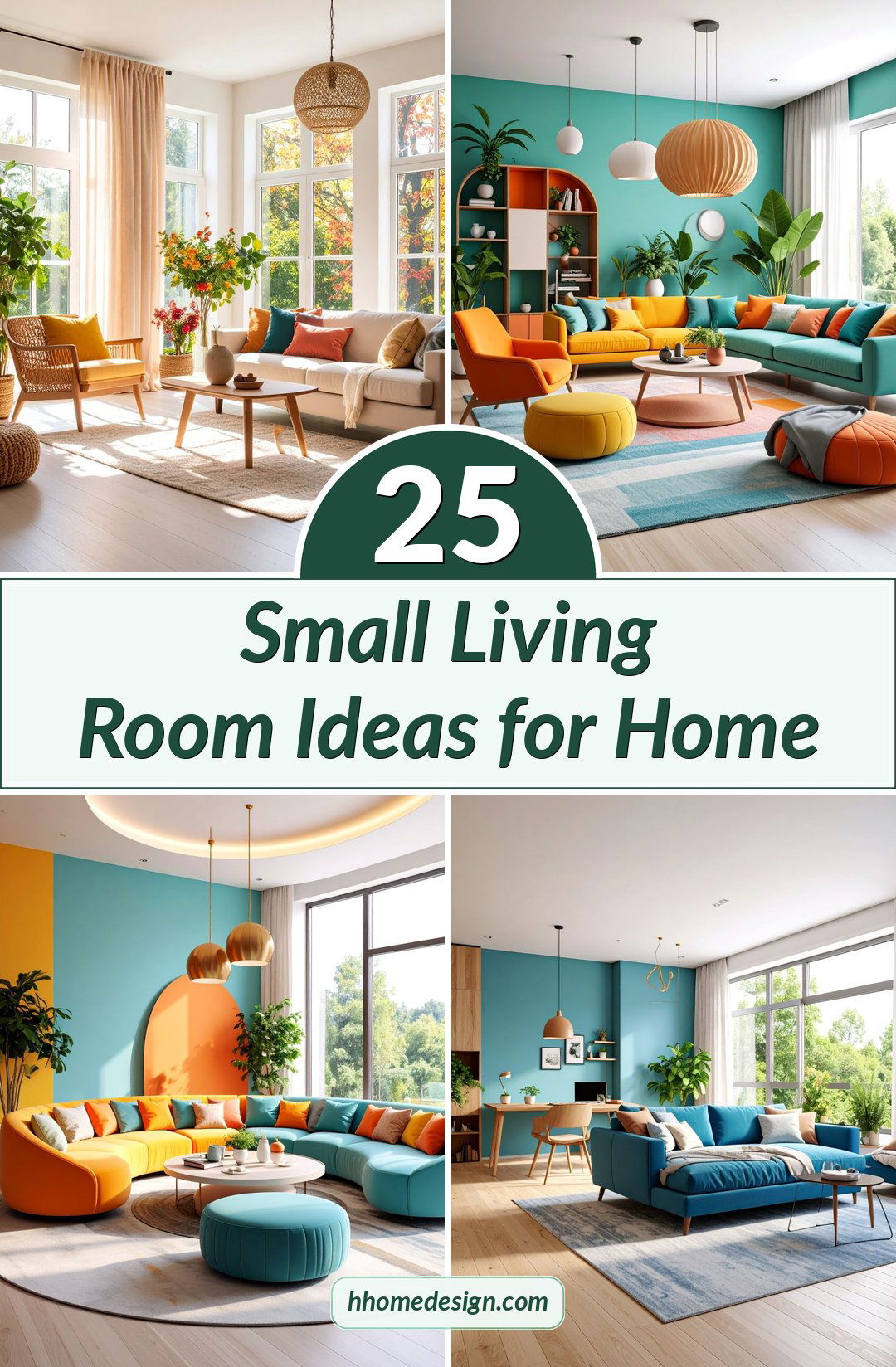
1. Scandinavian Minimalist Living Room with Light Wood Accents
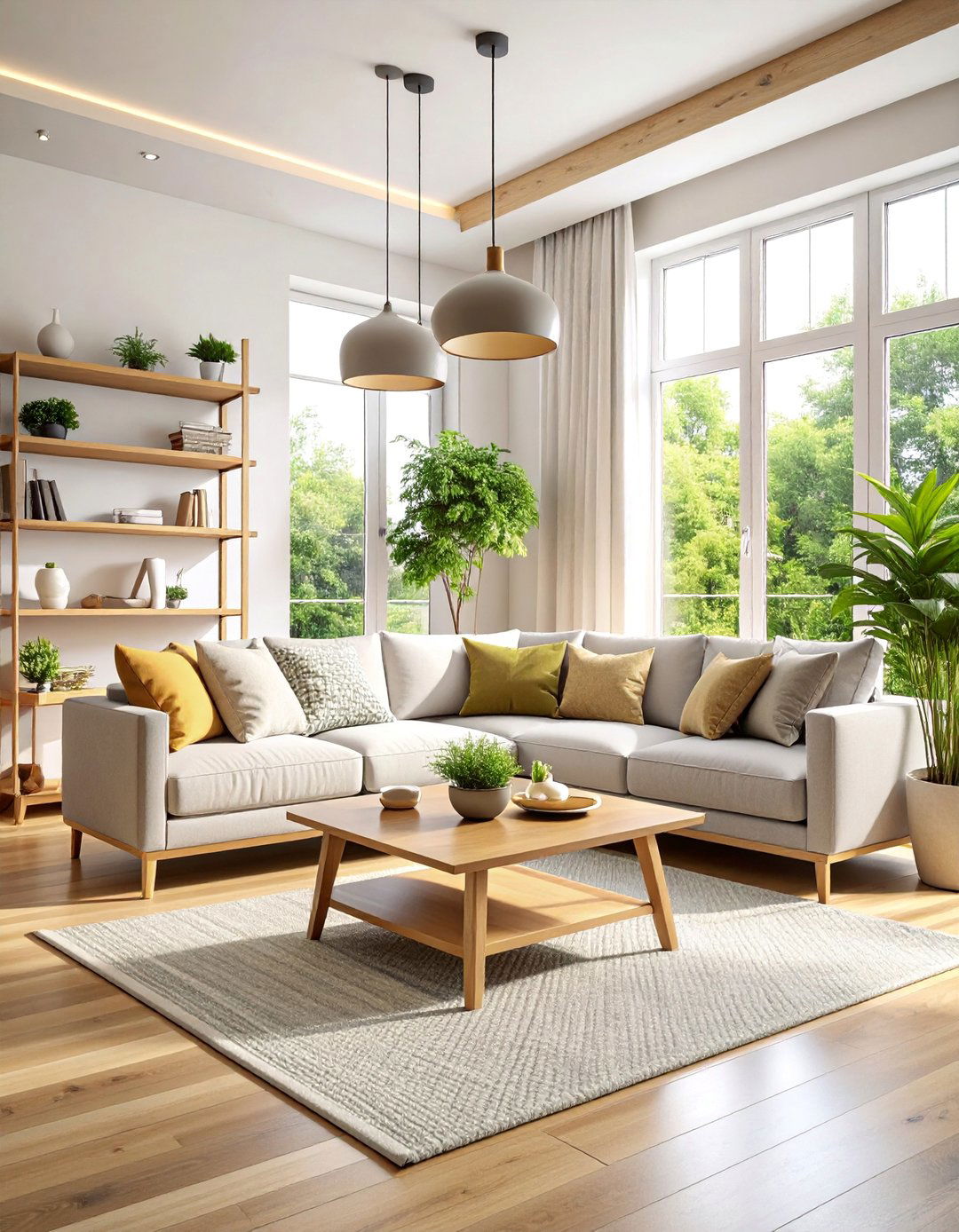
Minimalist design doesn't have to feel stark and sterile when executed thoughtfully. Create an elegant Nordic-style living room featuring clean lines, neutral color palettes, and natural materials that promote tranquility. Choose a light-colored sectional sofa in cream or soft gray, paired with a blonde wood coffee table and matching side tables. Install floating shelves in light oak to display curated books and minimal decorative objects. Paint walls in soft off-white with warm undertones to create brightness without the harshness of pure white. Add texture through woven throws, sheepskin rugs, and linen cushions in muted tones. Incorporate plants like snake plants or fiddle leaf figs for natural elements. Large windows should remain unobstructed or dressed with simple linen curtains. This approach maximizes natural light while maintaining the serene, uncluttered aesthetic that makes small spaces feel larger.
2. Multifunctional Living Room with Storage Ottoman Coffee Table

Multifunctional furniture is essential for small spaces, with storage ottomans serving triple duty as coffee tables, footstools, and storage solutions. Design a living room centered around a large, upholstered storage ottoman that opens to reveal space for blankets, pillows, and seasonal items. Surround it with a compact sectional sofa featuring built-in storage compartments under the seats. Position wall-mounted floating shelves above the seating area to store books and decorative items without consuming floor space. Choose furniture with exposed legs to create visual lightness and allow light to flow underneath. Add nesting tables that tuck away when not needed, providing extra surface space for entertaining. Install wall-mounted lighting to free up table space, and include a fold-down desk unit that disappears when closed. This comprehensive storage approach eliminates clutter while providing everything needed for comfortable daily living.
3. Vertical Storage Living Room with Floor-to-Ceiling Shelving
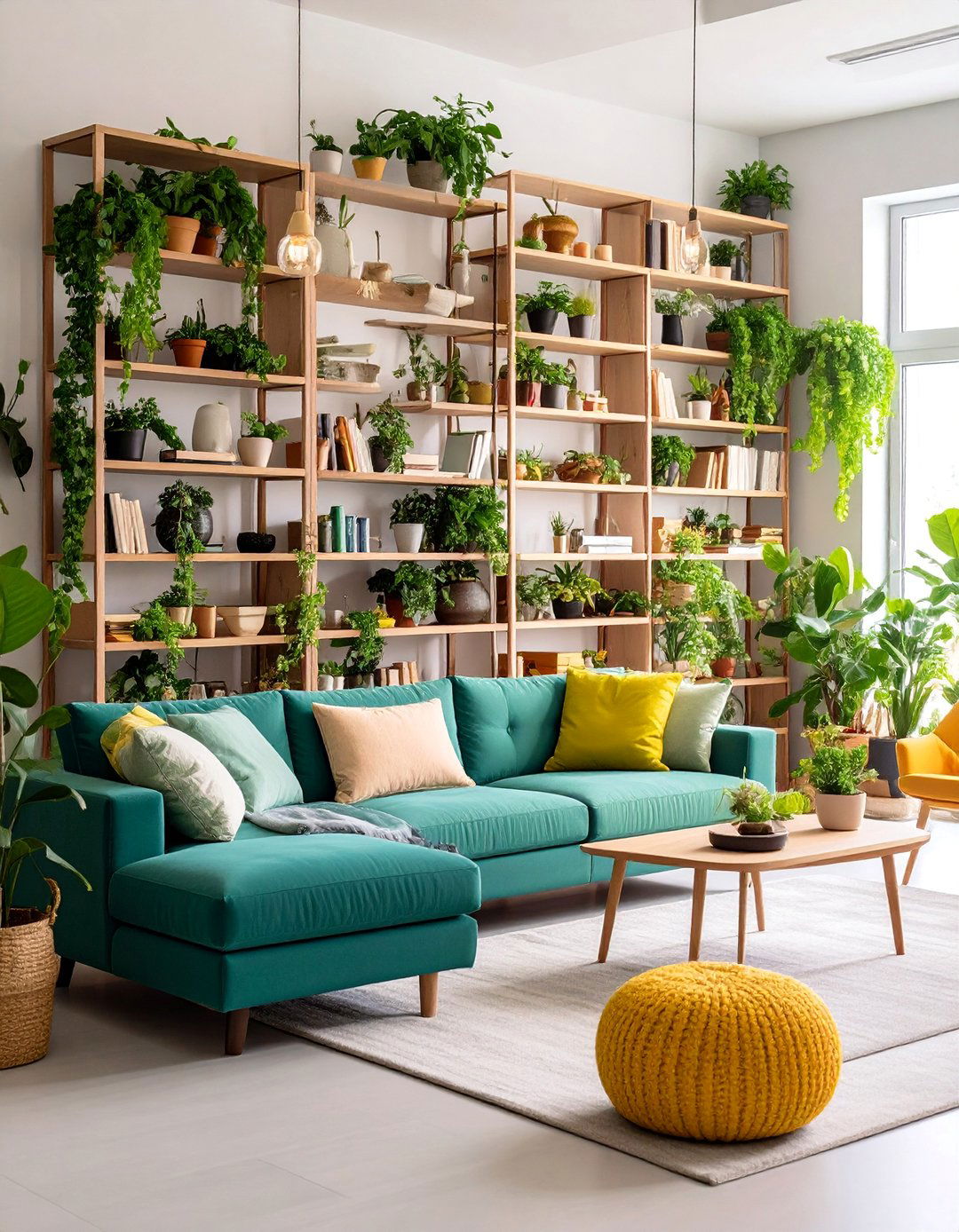
Vertical storage solutions maximize unused wall space by drawing the eye upward and creating the illusion of height. Install custom floor-to-ceiling shelving units along one wall, combining open shelves with closed cabinets for varied storage needs. Use staggered floating shelves on adjacent walls to create visual interest while maintaining an airy feeling. Position a low-profile sofa to avoid blocking the vertical lines, and choose a narrow console table beneath wall-mounted storage. Include ladder-style shelving units that lean against walls for additional display space. Paint the shelving the same color as the walls to create a seamless, built-in appearance that doesn't overwhelm the room. Store items in attractive baskets and boxes to maintain visual order. Add lighting strips inside shelving units to illuminate stored items and create ambient lighting. This approach transforms walls into functional storage while maintaining an organized, spacious appearance.
4. Mirror Gallery Wall Living Room for Optical Space Expansion

Mirrors create powerful optical illusions that can double the perceived size of a room by reflecting light and images. Create a dramatic gallery wall featuring mirrors of varying sizes and shapes, strategically positioned to reflect different areas of the room. Group antique and modern mirrors together for an eclectic, artistic display that adds visual depth while reflecting light from multiple angles. Place the largest mirror opposite a window to reflect outdoor views and natural light. Include circular, rectangular, and octagonal mirrors in coordinating frames to create visual rhythm. Position smaller mirrors near light sources like table lamps and sconces to amplify artificial lighting. Choose mirrors with minimal, simple frames to maximize reflection without overwhelming the space with decorative elements. This approach creates a sophisticated focal point while significantly brightening and expanding the room's visual boundaries through strategic light reflection and spatial illusion.
5. Bold Jewel Tone Living Room with Dark Cocooning Colors
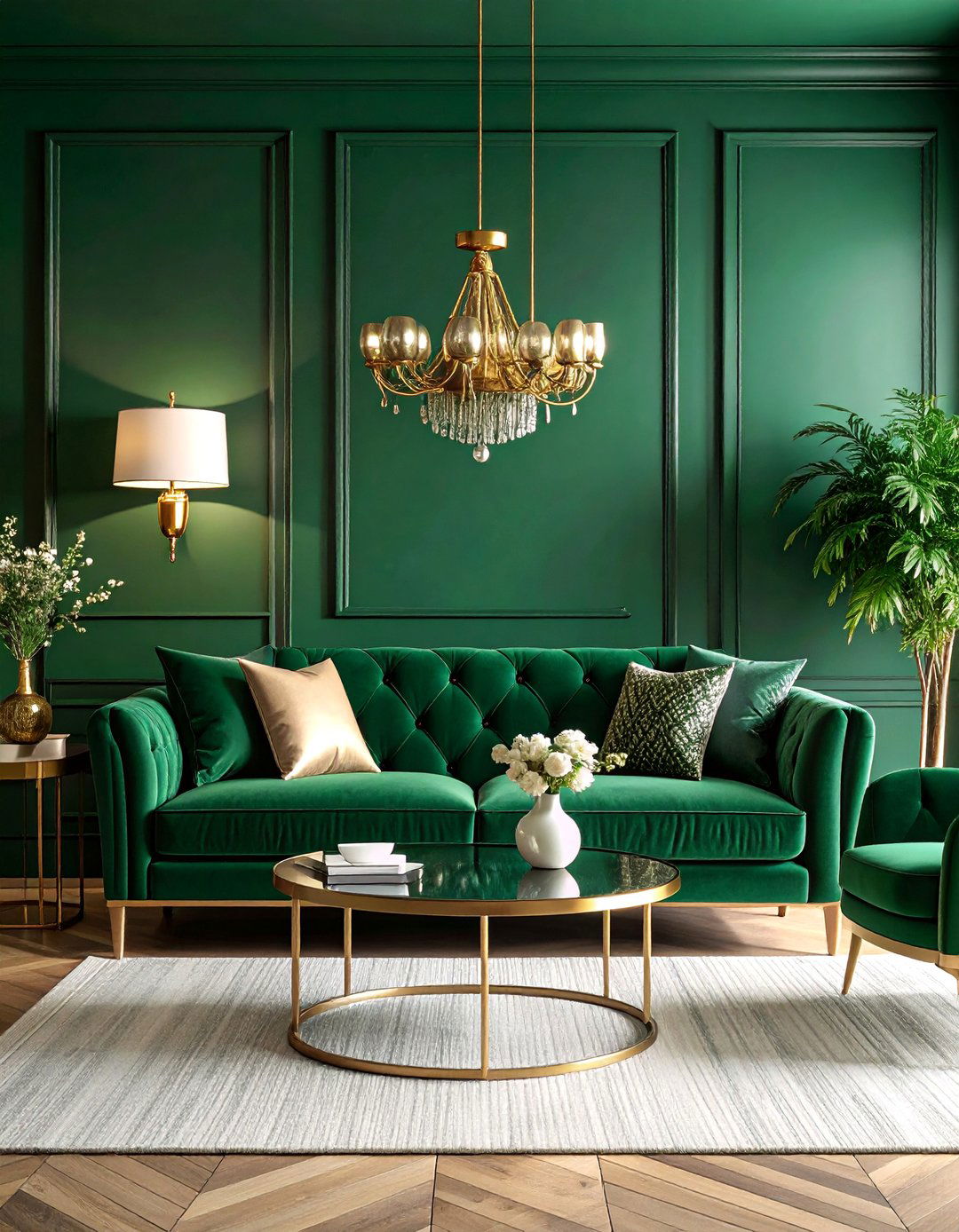
Bold, dark colors can actually make small rooms feel intimate and sophisticated rather than cramped when applied thoughtfully. Paint walls in rich emerald green or deep navy blue to create a cocooning effect that feels intentional and luxurious. Embrace maximalism with vibrant jewel tones like deep purples and golds that allow for personal expression through dramatic patterns and textures. Choose a velvet sofa in complementary deep tones, and layer rich fabrics through curtains, cushions, and throws. Add metallic accents in brass or gold to reflect light and add glamour. Include artwork with bold colors that complement the wall color. Use multiple light sources including table lamps, floor lamps, and overhead lighting to ensure the space feels bright despite the dark palette. Paint the ceiling a lighter shade to maintain height perception. This approach creates a sophisticated, jewel-box atmosphere that feels deliberately intimate.
6. Floating Furniture Living Room with Legs Exposed Design
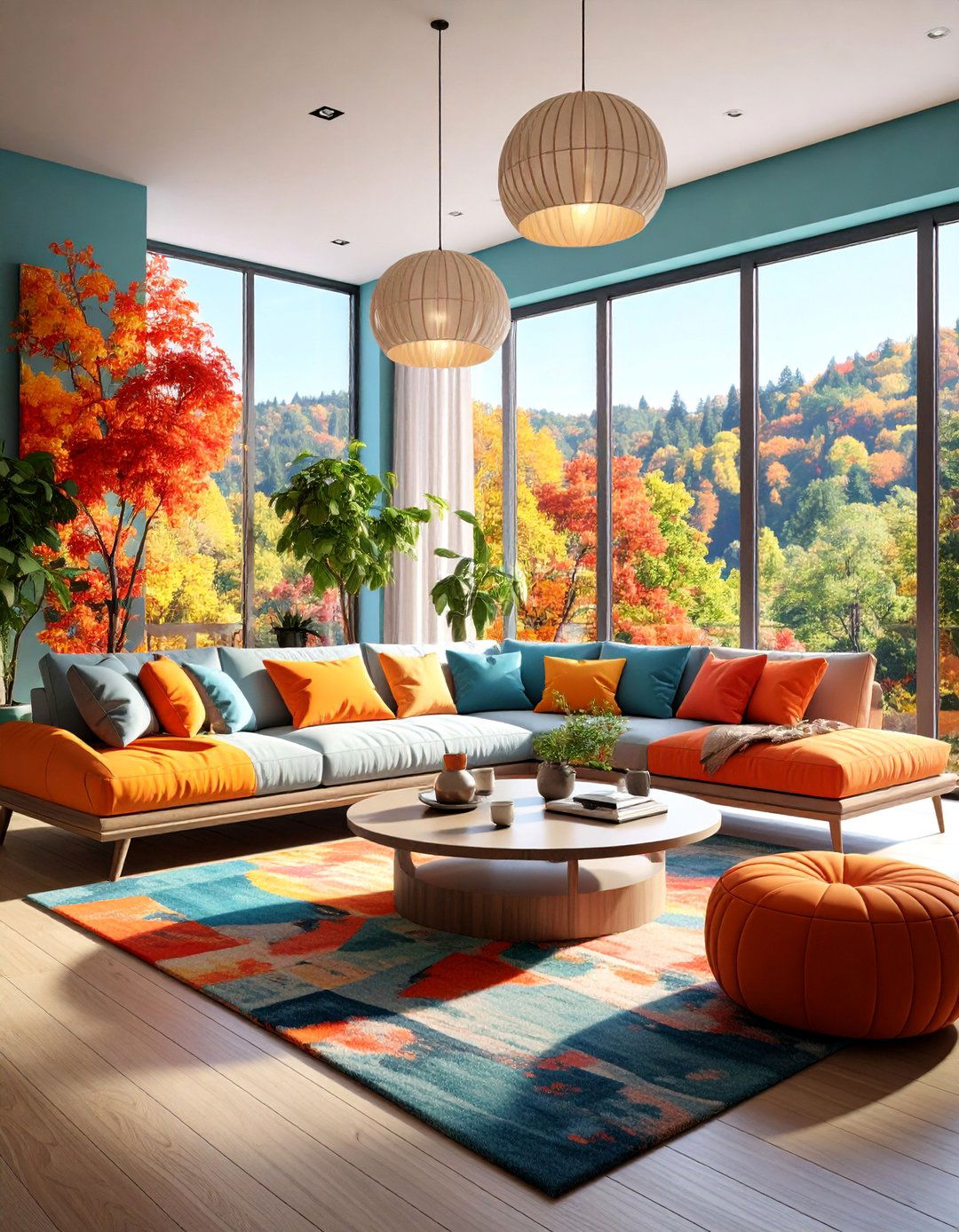
Choose furniture with exposed legs to create visual lightness and allow light to filter underneath, making spaces feel more open. Select a sectional sofa, coffee table, and side tables that all feature visible legs, creating continuous sight lines across the floor. Position furniture slightly away from walls to emphasize the floating effect and improve traffic flow. Choose pieces in lighter colors or natural wood tones to enhance the airy feeling. Include a storage bench with legs for additional seating that doesn't feel heavy in the space. Add a console table behind the sofa with slim legs for display and storage. Install wall-mounted lighting to maintain the floating aesthetic throughout the room. Use a large area rug to define the seating area while allowing furniture legs to remain visible around the perimeter. This technique creates visual breathing room and makes small spaces feel significantly larger by eliminating visual barriers at floor level.
7. Convertible Living Room with Sofa Bed and Fold-Away Desk
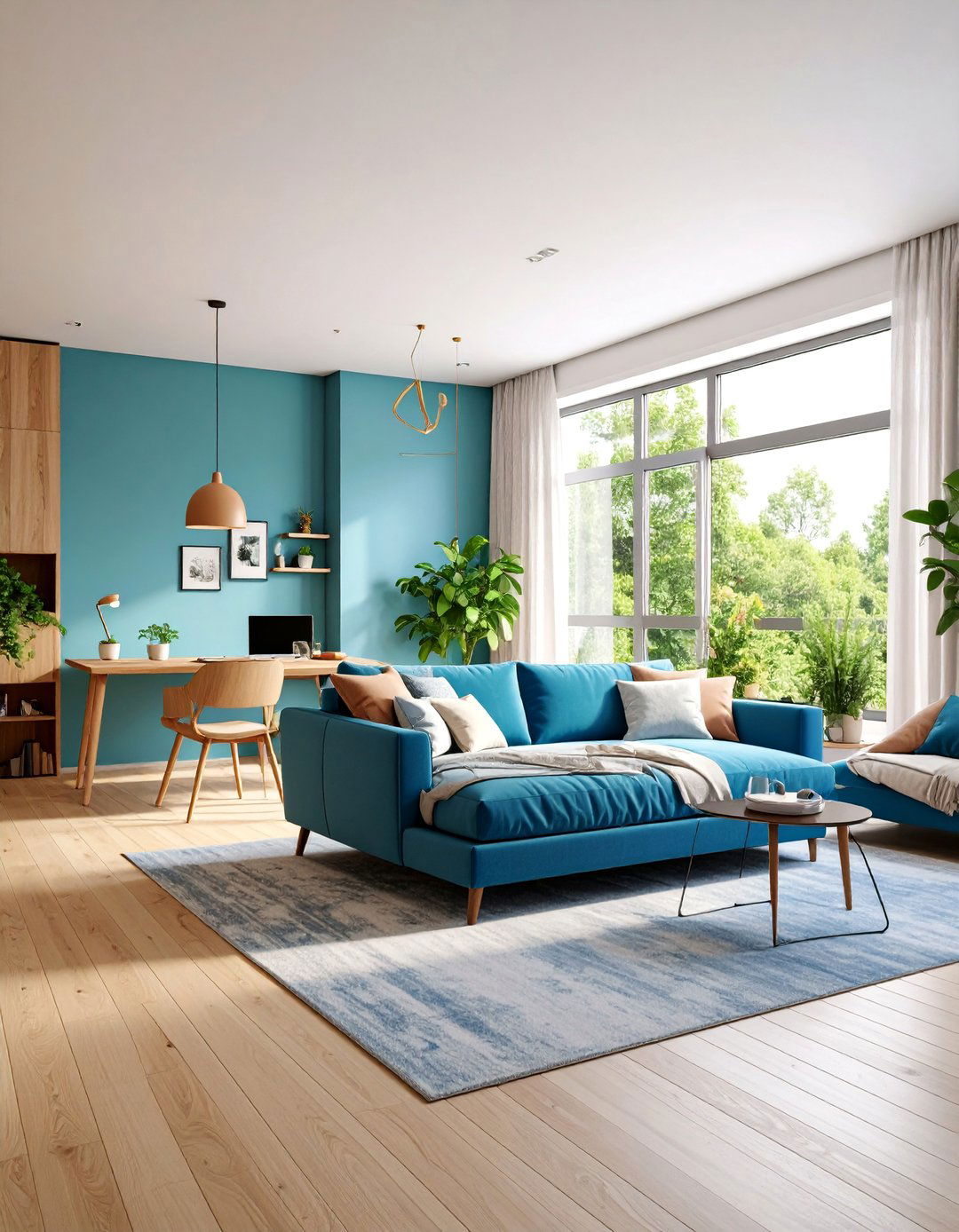
Convertible furniture allows rooms to transform from daily living spaces into guest accommodations or work areas as needed. Center the room around a stylish sofa bed that serves as primary seating during the day and converts to comfortable sleeping space for guests. Install a wall-mounted fold-away desk that disappears when closed, creating a clean wall surface. Add a dining table that adjusts in height and extends for entertaining, then compacts for daily use. Include modular seating elements that can be reconfigured for different activities. Choose storage furniture that doubles as seating, such as storage benches and ottomans with removable tops. Install Murphy bed mechanisms if space allows, or use a daybed that serves both functions. Add mobile storage carts that can be repositioned as needed. This approach maximizes functionality by allowing one room to serve multiple purposes without compromising style or comfort.
8. Light Color Palette Living Room with Pastel Accents
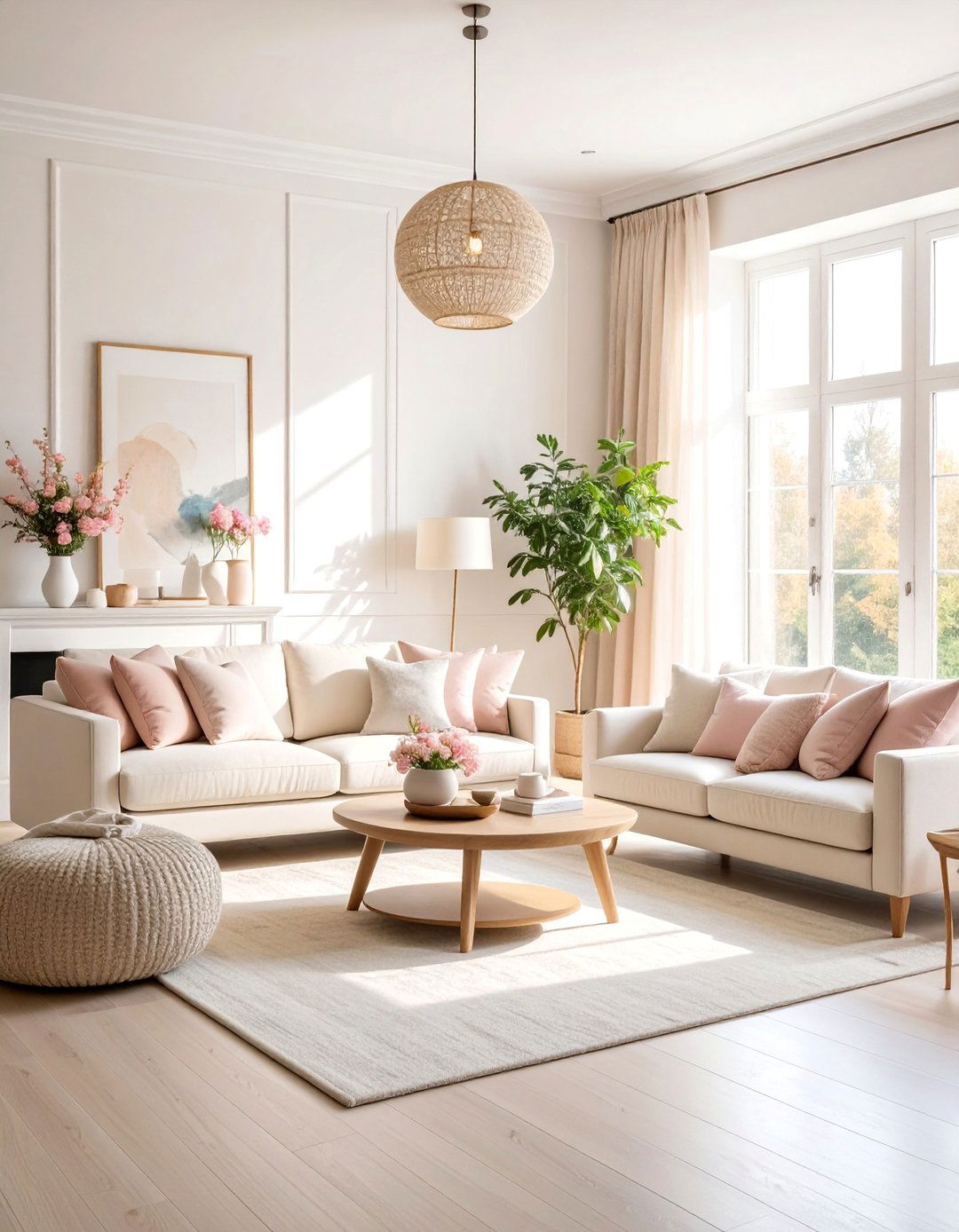
Light colors and pastels reflect natural light more effectively than darker shades, making small rooms feel more spacious and airy. Paint walls in soft off-white or pale gray with warm undertones to avoid sterile feelings. Introduce subtle pastel accents through cushions, throws, and artwork in soft pinks, blues, or sage greens. Choose furniture in cream, light gray, or natural wood tones to maintain the bright, open feeling. Add depth through layered neutral textures including linen, cotton, and natural fibers. Include one accent wall in a slightly deeper shade of the main color to create visual interest without overwhelming the space. Position mirrors strategically to reflect the light colors and amplify brightness. Use sheer window treatments to maximize natural light while maintaining privacy. Add plants in light-colored planters to bring life to the space. This approach creates a serene, spa-like atmosphere that feels expansive and calming.
9. Industrial Style Living Room with Metal and Reclaimed Wood

Industrial design elements like brushed metals and reclaimed wood create lived-in textures that add character to small spaces. Combine metal-framed furniture with reclaimed wood coffee tables and shelving units for authentic industrial appeal. Choose a leather sofa in brown or black to complement the raw materials palette. Install exposed Edison bulb lighting fixtures and metal track lighting for both function and style. Use modular metal shelving systems that can be customized and reconfigured as needed. Add concrete or metal accent pieces like side tables and planters. Include vintage industrial accessories such as metal storage containers and gear-inspired wall art. Paint walls in neutral grays or whites to balance the darker furniture elements. Use area rugs with geometric patterns to soften the hard surfaces while maintaining the industrial aesthetic. This style creates visual interest through contrasting textures while maintaining functionality.
10. Corner Conversation Nook with Curved Seating Arrangement
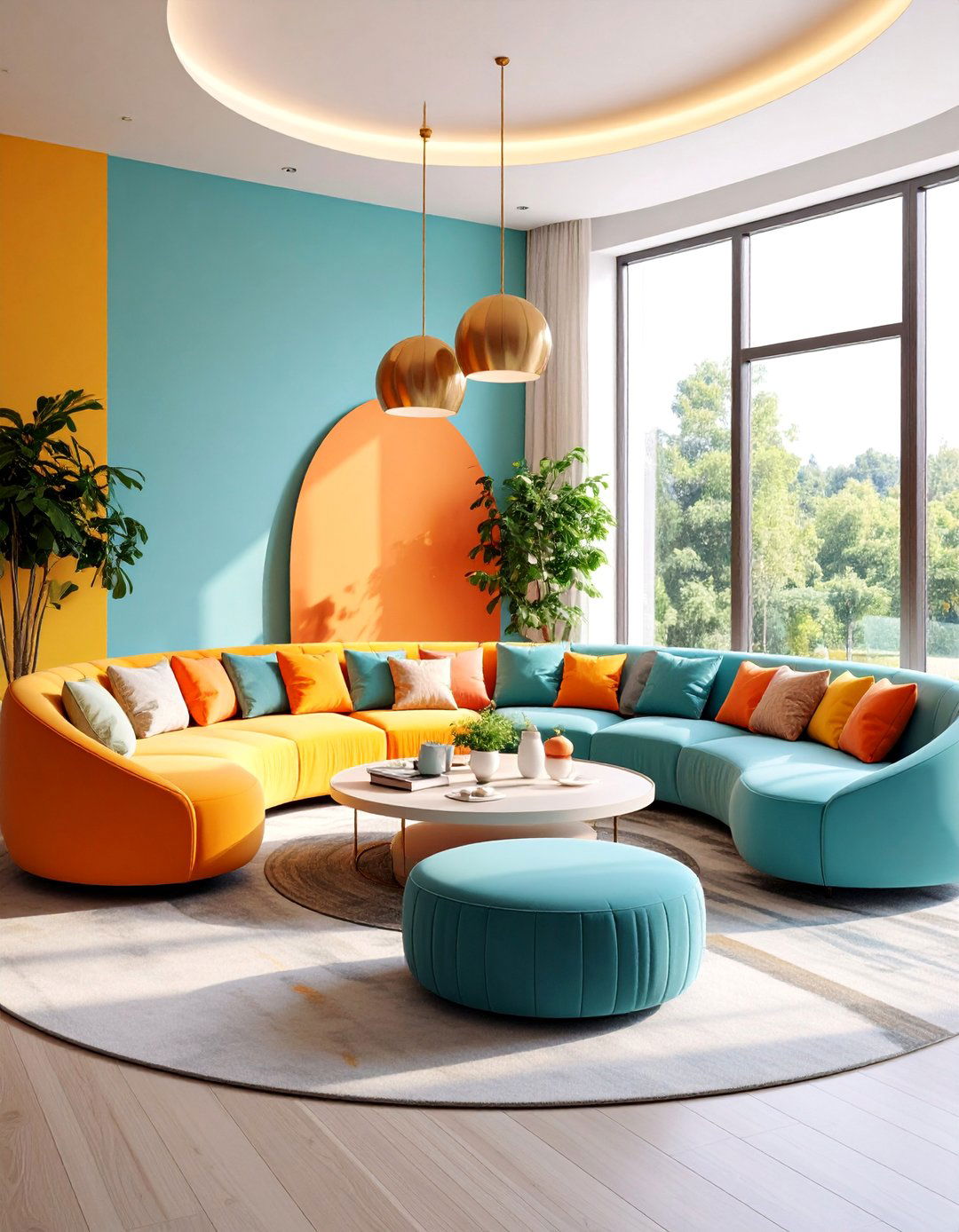
Curved sofas and organic shapes are growing trends that create more intimate, cozy environments compared to traditional angular furniture. Position a curved sectional or loveseat in the corner of the room to create an intimate conversation area that maximizes corner space utilization. Focus the design on human connection by arranging seating to face each other rather than toward a television. Add a round coffee table to complement the curved lines and improve traffic flow around the space. Include curved accent chairs or a circular ottoman for additional seating that maintains the organic flow. Install corner shelving or a corner plant stand to fully utilize the angular space. Use curved or circular mirrors to reinforce the soft, flowing aesthetic. Add ambient lighting through curved floor lamps or pendant lights. Include soft textiles and cushions to enhance the cozy, intimate feeling. This arrangement creates a dedicated social space within the larger room.
11. Bi-Level Storage Living Room with Upper and Lower Zones
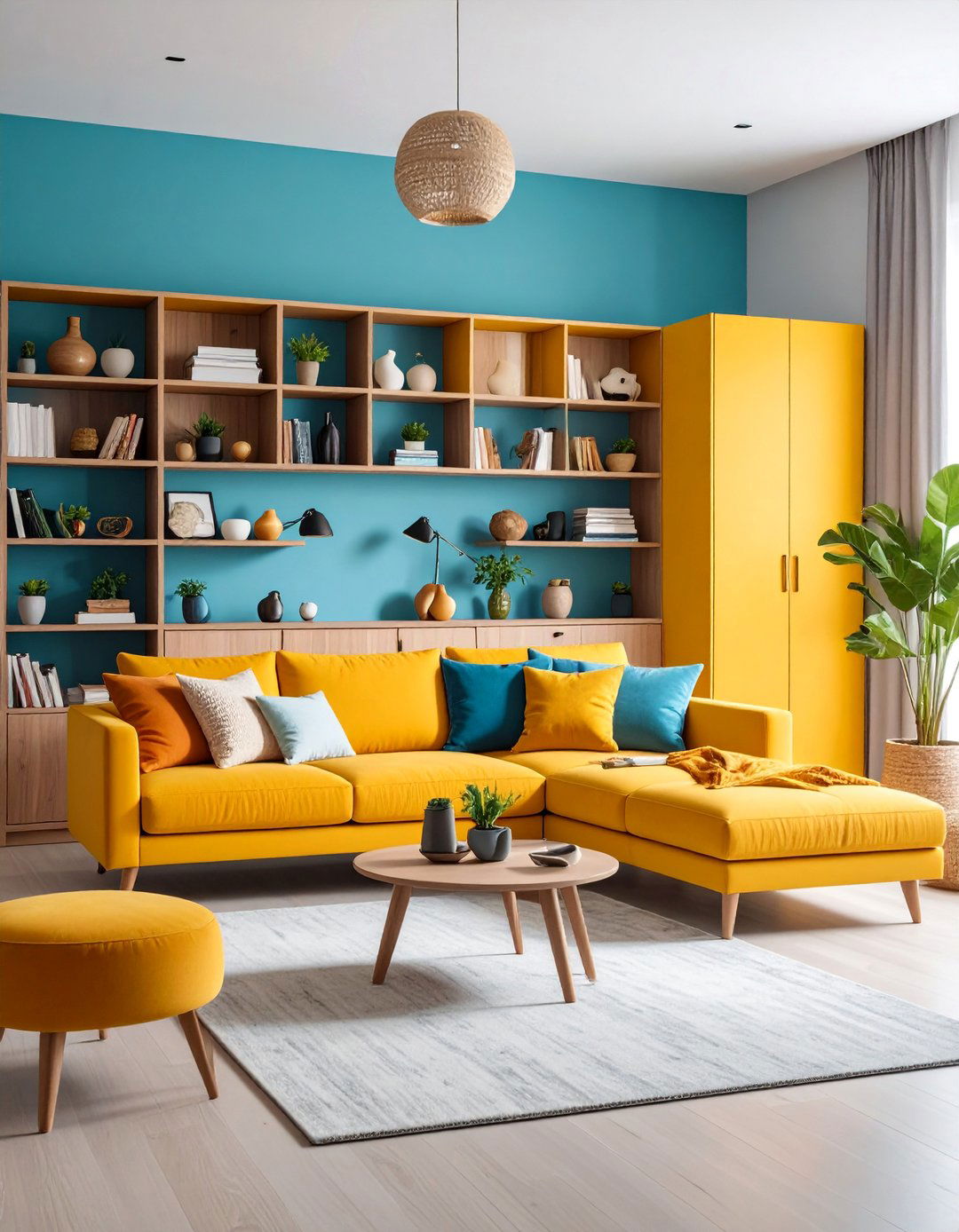
Creating distinct storage zones at different heights maximizes storage capacity while maintaining visual organization. Design upper storage using wall-mounted cabinets and high shelving for items used less frequently, while keeping lower storage easily accessible for daily necessities. Install floating shelves at different heights to create visual rhythm and accommodate various item sizes. Use the space under staircases or in alcoves for built-in storage solutions that maximize every available inch. Position low storage furniture like console tables and media units to provide surface space and hidden storage. Include tall, narrow bookcases that draw the eye upward while providing extensive storage capacity. Add storage benches and ottomans for lower-level organization. Use decorative baskets and boxes to maintain visual cohesion across different storage levels. Install lighting at various heights to illuminate both upper and lower storage areas. This approach creates comprehensive organization without overwhelming the space.
12. Natural Light Maximizing Living Room with Sheer Window Treatments
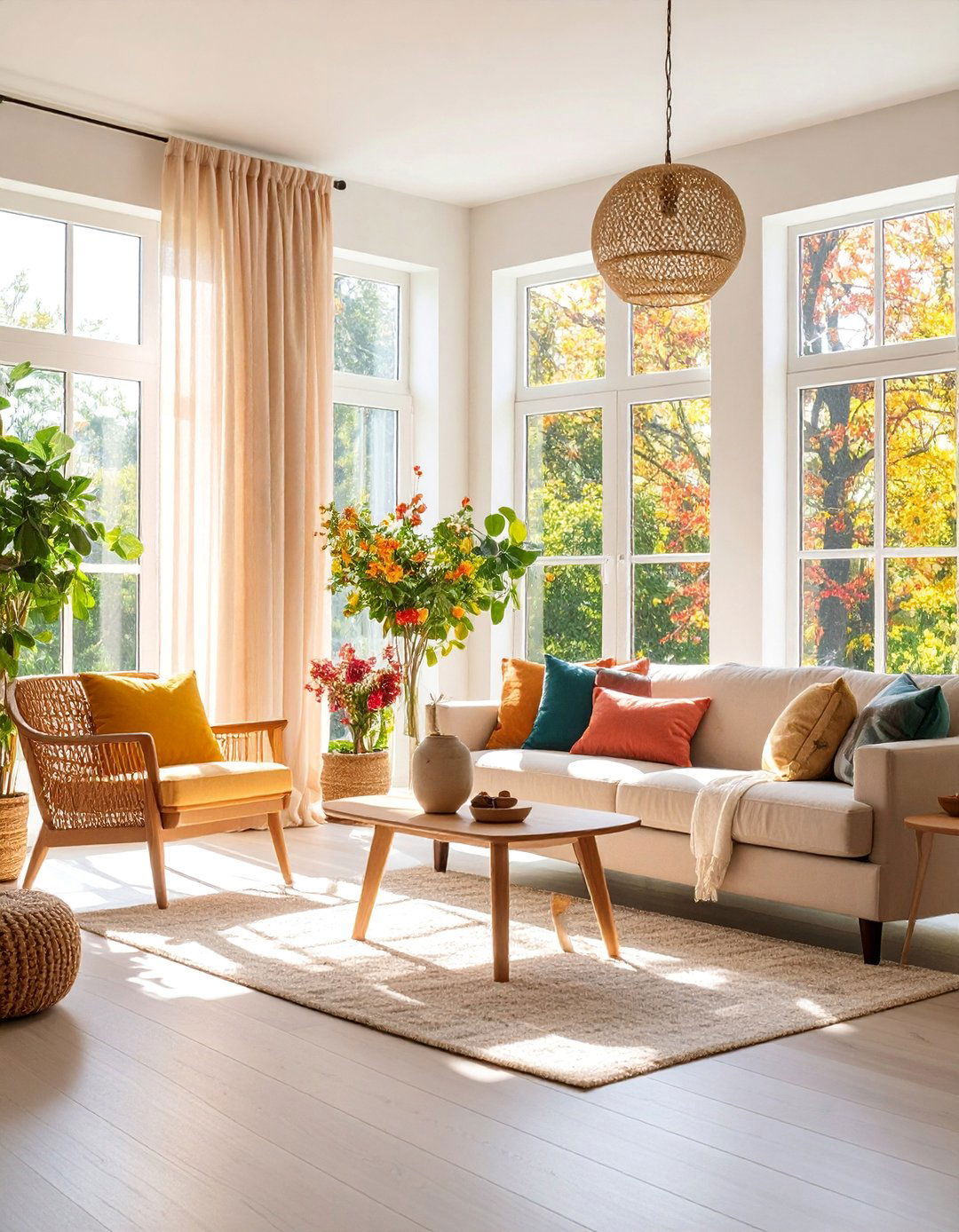
Making the most of natural light sources by keeping window treatments simple and choosing light-filtering options helps small rooms feel larger. Install sheer curtains or light-filtering roller shades that provide privacy while allowing maximum light penetration. Position mirrors opposite or adjacent to windows to amplify natural light throughout the room. Place large mirrors directly across from windows to reflect outdoor views and create the illusion of additional windows. Choose light-colored furniture and accessories that reflect rather than absorb available light. Avoid heavy window treatments or dark colors near windows that might block or absorb light. Keep window sills clear of clutter to allow unobstructed light flow. Use metallic or glass accessories to create additional light reflection points throughout the room. Paint window trim and frames in light colors to enhance the brightness effect. This approach creates a bright, airy atmosphere that makes small spaces feel significantly larger.
13. Monochromatic Living Room with Tonal Color Variations
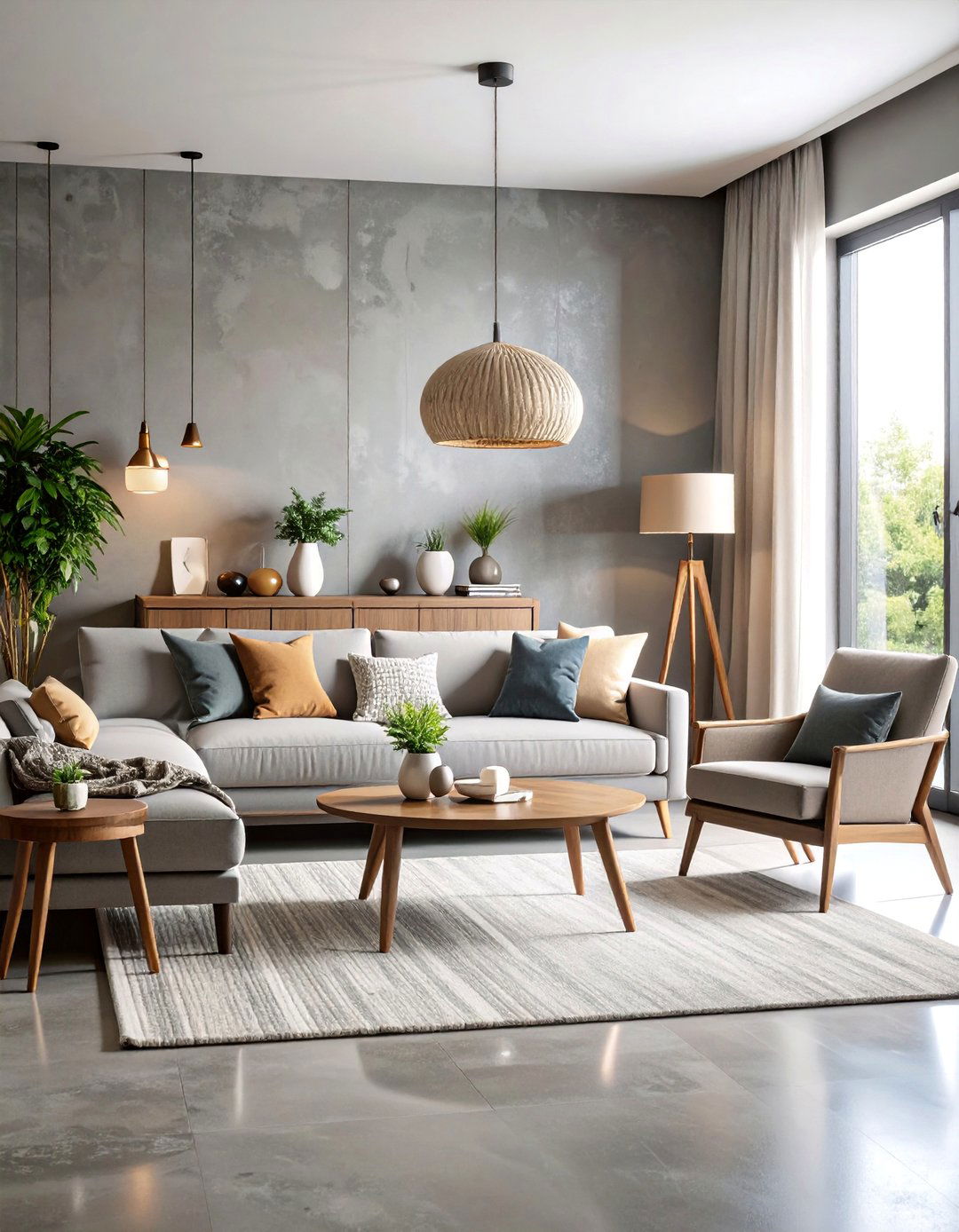
Monochromatic color schemes using different shades of the same color create depth and sophistication while maintaining visual cohesion. Choose one base color like soft gray, warm beige, or sage green, then use multiple tones and textures within that color family. Paint walls in the lightest shade, choose furniture in medium tones, and add accessories in the deepest version of the color. Layer different textures and materials within the same color palette to create visual interest without color contrast. Include various fabric weights and surface finishes from matte to glossy to prevent monotony. Add metallic accents in complementary metals to provide subtle contrast without breaking the color story. Use plants and natural elements to introduce organic variation within the scheme. Position lighting to highlight the tonal variations and create depth. This approach creates sophisticated, calming environments that feel larger due to the visual continuity.
14. Entertainment-Focused Living Room with Hidden Media Storage
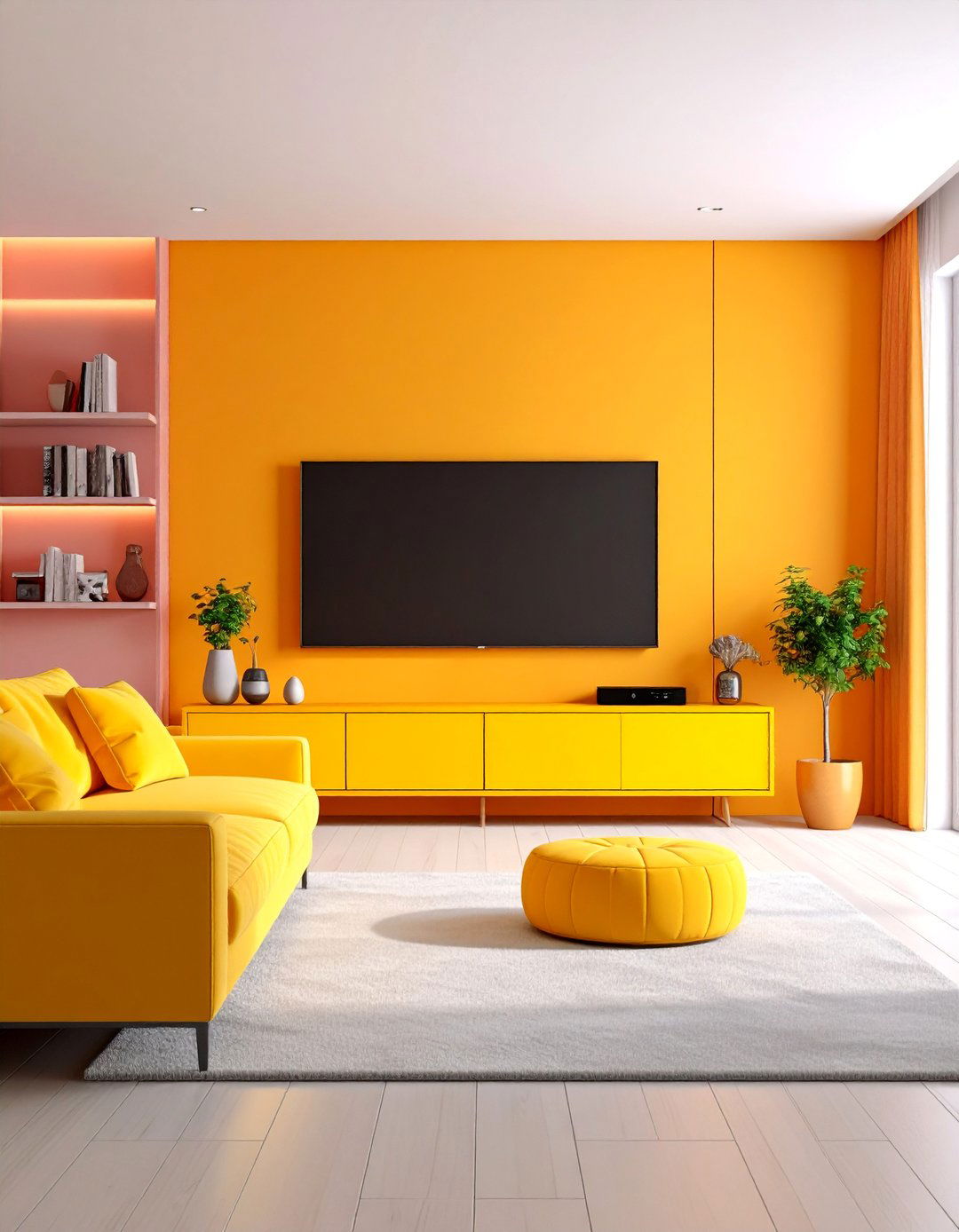
Wall-mounting televisions and concealing media equipment helps small living rooms avoid feeling cluttered by technology. Mount the television on the wall or inside a cabinet that closes to hide the screen when not in use. Choose furniture with built-in cable management and hidden compartments for media equipment and gaming consoles. Install floating shelves or cabinets around the media area to store movies, games, and accessories without using floor space. Include a media console with doors to conceal equipment while providing surface space for decorative items. Position seating to optimize viewing angles while maintaining conversation areas. Add sound-absorbing materials through soft furnishings and wall treatments to improve acoustics. Use cord management solutions to keep technology cables hidden and organized. Include ambient lighting that can be dimmed for viewing. This approach integrates technology seamlessly without letting it dominate the space.
15. Flexible Modular Living Room with Reconfigurable Elements
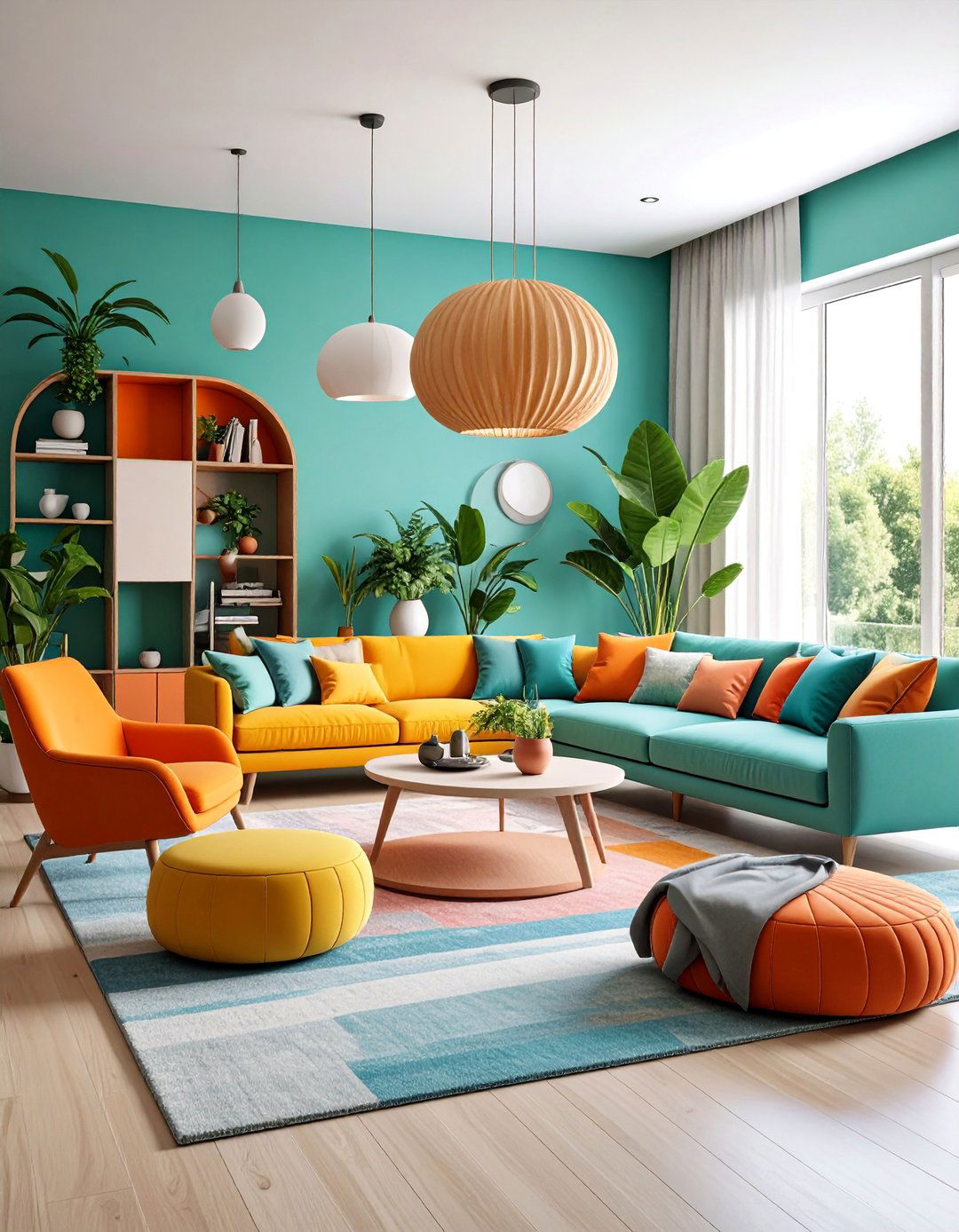
Modular furniture systems provide flexibility to reconfigure spaces for different activities and changing needs. Choose modular seating components that can be separated and rearranged for intimate conversations or larger gatherings. Include modular shelving systems that can be expanded, reduced, or reconfigured as storage needs change. Select furniture pieces that can serve multiple functions depending on how they're arranged. Add mobile elements like rolling carts, lightweight chairs, and ottoman cubes that can be easily repositioned. Include stackable or nesting furniture that provides flexibility without requiring permanent floor space. Choose modular wall storage that can adapt to changing display and organization needs. Use area rugs to define different arrangements and purposes for the same space. Add flexible lighting solutions that can be adjusted for various configurations. This approach allows the room to evolve with changing lifestyles and requirements.
16. Warm Neutral Living Room with Textural Layering

Warm neutral color palettes create inviting, comfortable spaces that feel larger while maintaining coziness. Choose warm beiges, soft taupes, and creamy whites as the foundation, then layer various textures to create depth and interest. Include furniture in natural materials like wood, rattan, and linen to enhance the warm feeling. Add plush cushions, soft throws, and natural fiber rugs to create the comfort-driven design that's trending in 2025. Layer different fabric weights from heavy wool to light cotton to create tactile variety. Include woven baskets, ceramic vases, and wooden accessories to reinforce the natural theme. Use warm lighting through table lamps and floor lamps with soft shades. Add plants in natural fiber planters to enhance the organic feeling. Position mirrors with warm-toned frames to reflect light while maintaining the cozy atmosphere. This approach creates inviting, comfortable spaces that feel both sophisticated and relaxing.
17. Artistic Gallery Living Room with Statement Wall Display
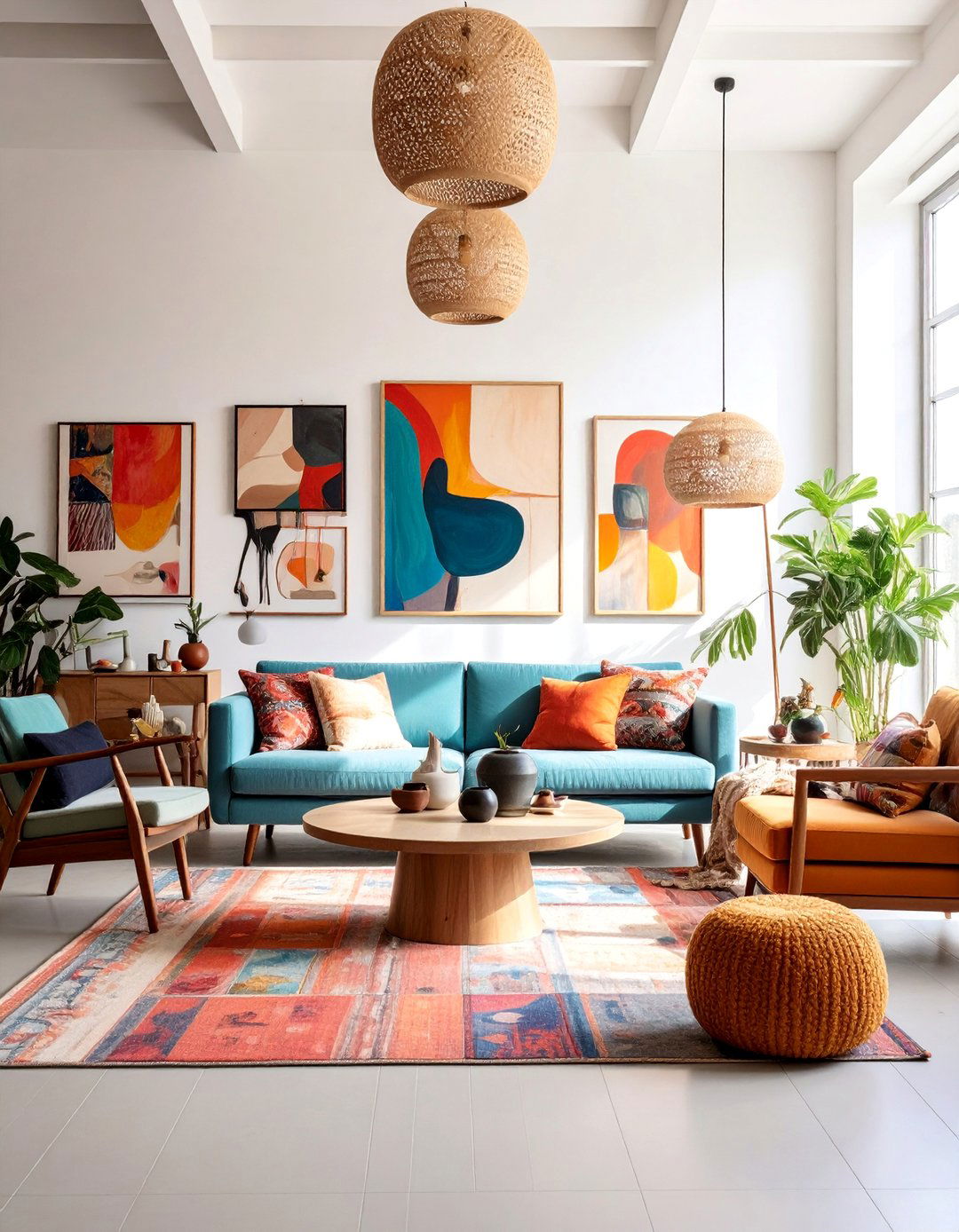
Personalized art displays are a major trend for 2025, offering opportunities to showcase individuality through curated collections. Create one feature wall dedicated to an artistic gallery display while keeping other walls simple to avoid overwhelming the small space. Mix different sized artworks, photographs, and decorative objects in a carefully planned arrangement. Include various frame styles and materials to create visual interest while maintaining overall cohesion. Position lighting to highlight the artwork and create depth in the display. Keep furniture simple and neutral to allow the art to be the focal point. Include floating shelves to display three-dimensional art objects and books. Choose one or two accent colors from the artwork to carry through in small accessories and textiles. Use the gallery wall to draw attention upward and create the illusion of height. This approach personalizes the space while creating a sophisticated, curated atmosphere.
18. Biophilic Living Room with Vertical Garden Elements
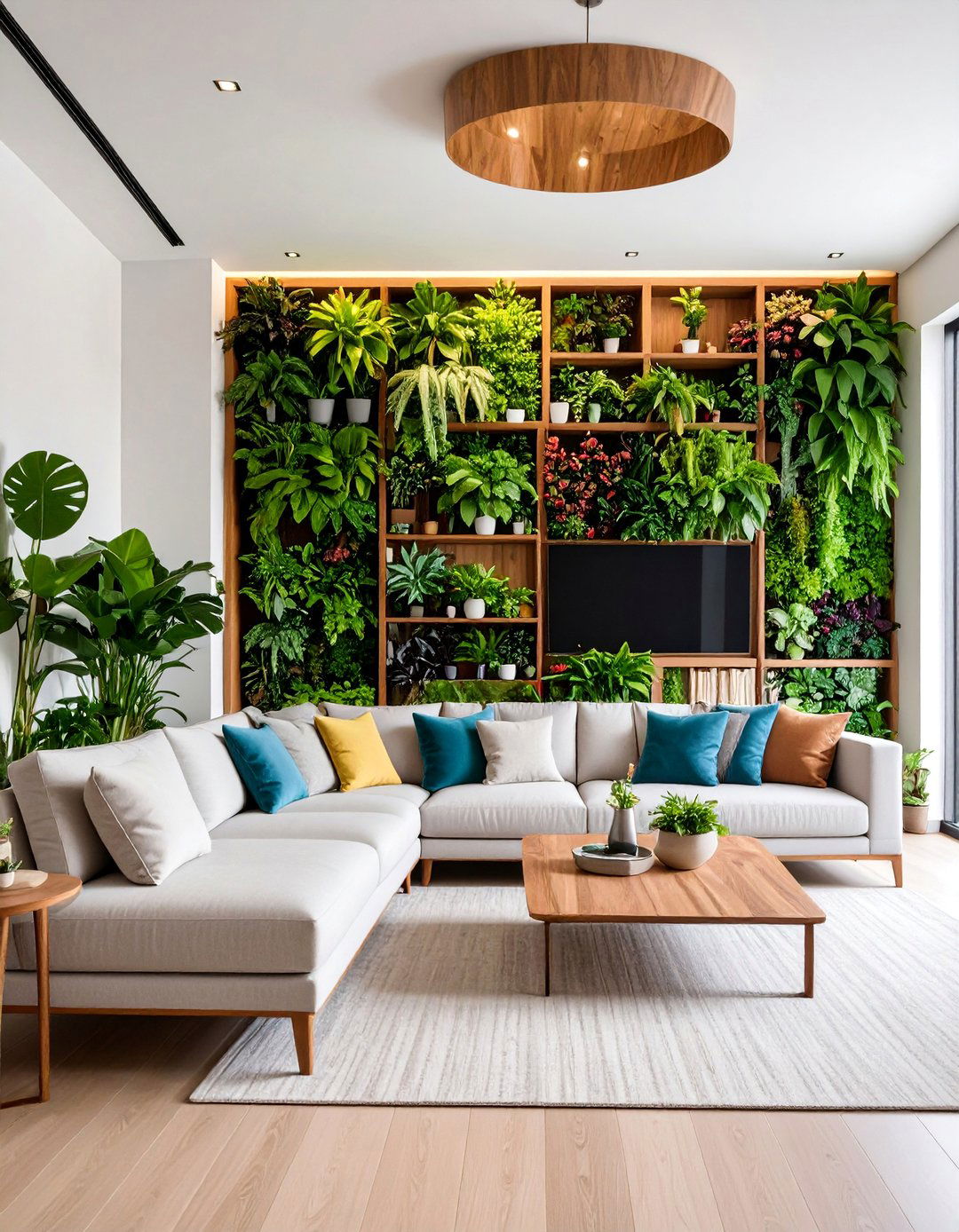
Biophilic design incorporating natural elements continues to gain popularity, especially in small urban spaces that lack outdoor access. Create a living wall or vertical garden on one side of the room using wall-mounted planters and trailing plants. Vertical gardens improve indoor air quality while adding natural beauty without consuming floor space. Choose furniture in natural materials like bamboo, rattan, and unfinished wood to complement the plant display. Include large floor plants in corners and smaller plants on floating shelves throughout the room. Use natural color palettes of greens, browns, and earth tones to enhance the connection with nature. Add water features like small fountains to introduce natural sounds. Include natural fiber textiles and organic shapes in furniture and accessories. Position lighting to highlight plants and create natural-feeling illumination. This approach brings outdoor serenity indoors while purifying air and creating visual interest.
19. Ambient Lighting Living Room with Layered Illumination

Layered lighting using task, accent, and ambient sources brings dimension and warmth while allowing rooms to shift moods throughout the day. Install multiple light sources at different heights including table lamps, floor lamps, wall sconces, and overhead lighting. Use wall-mounted lighting to free up surface space while providing adequate illumination for various activities. Include dimmer switches to adjust lighting levels for different times of day and activities. Add LED strip lighting under shelves and behind furniture to create ambient glow. Position lights to eliminate dark corners and create even illumination throughout the space. Use lamp shades in light colors to maximize light diffusion. Include candles and decorative lighting for atmospheric enhancement. Choose fixtures that serve as decorative elements when not illuminated. This approach creates warm, inviting atmospheres while ensuring adequate lighting for all activities without relying on harsh overhead lighting.
20. Compact Dining Integration Living Room with Space-Sharing Design
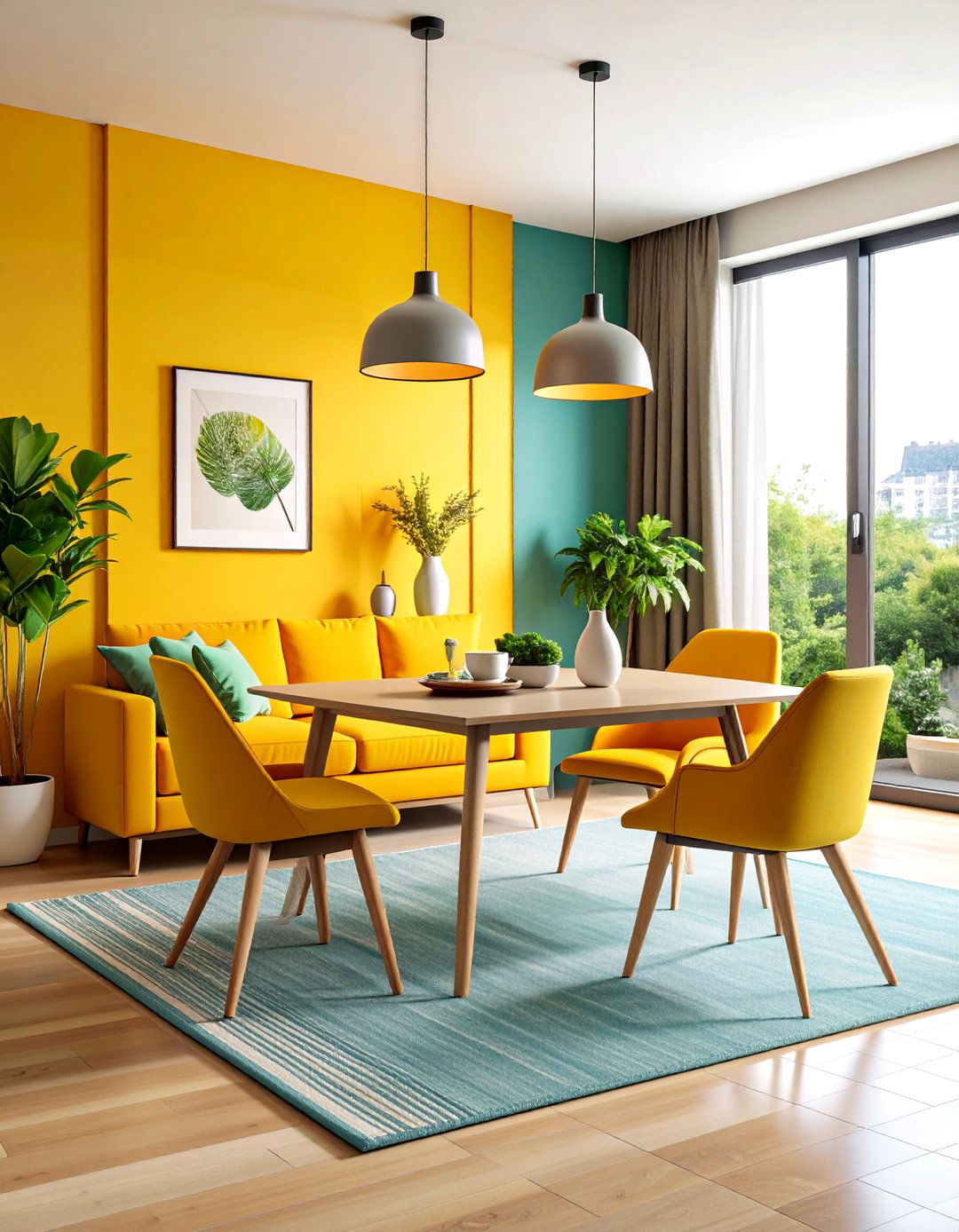
Open floor plans often require living and dining areas to share space, making efficient furniture arrangement crucial. Position a small dining table that can extend for entertaining but compacts for daily use between the living area and kitchen. Choose a console table that can transform into a dining surface, maximizing flexibility in small spaces. Use area rugs to define separate zones within the shared space. Include seating that serves both areas, such as dining chairs that can be moved to the living area when needed. Install pendant lighting over the dining area that complements the living room lighting scheme. Choose furniture in coordinating styles and colors to create visual continuity between zones. Add storage that serves both functions, such as a sideboard that stores dining items and provides living room display space. Use folding or stackable dining chairs that can be stored when not needed. This approach creates distinct functional areas within one cohesive space.
21. Window Seat Living Room with Built-In Seating Storage
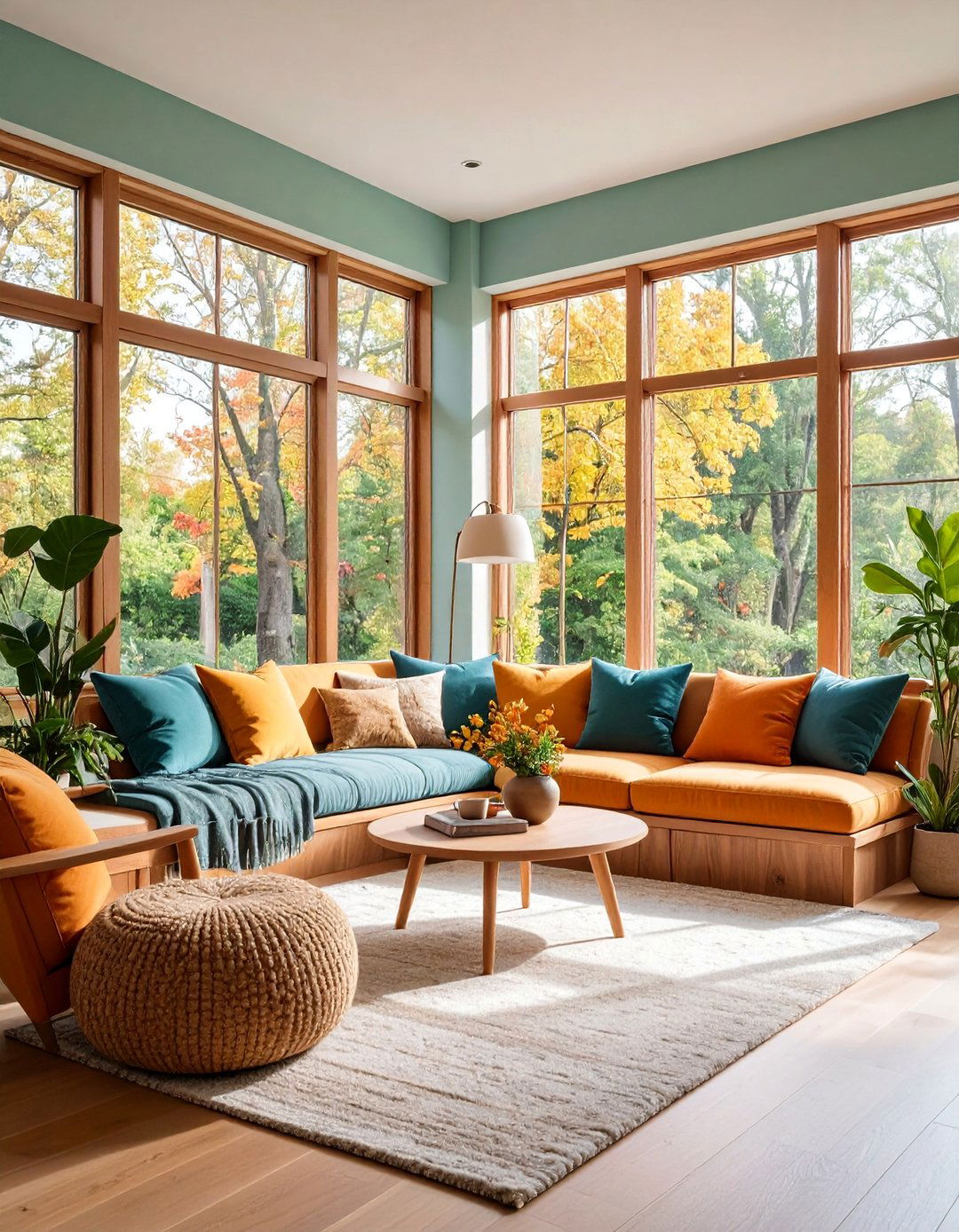
Custom window seats maximize awkward spaces while providing additional seating and storage in small living rooms. Build a cushioned window seat with lift-up storage underneath for blankets, books, and seasonal items. Position the window seat to take advantage of natural light for reading and relaxation. Add bookcases or storage units on either side of the window to create a reading nook effect. Include comfortable cushions and pillows to make the seating area inviting. Install reading lights or sconces above the window seat for evening use. Use the window seat as additional seating for gatherings by adding moveable cushions. Choose fabrics that coordinate with the room's overall color scheme. Add storage baskets underneath for organization. Position a small side table or built-in shelf for drinks and books. This approach transforms underutilized window areas into functional, attractive features that enhance both storage and seating capacity.
22. Color-Blocking Living Room with Bold Accent Walls
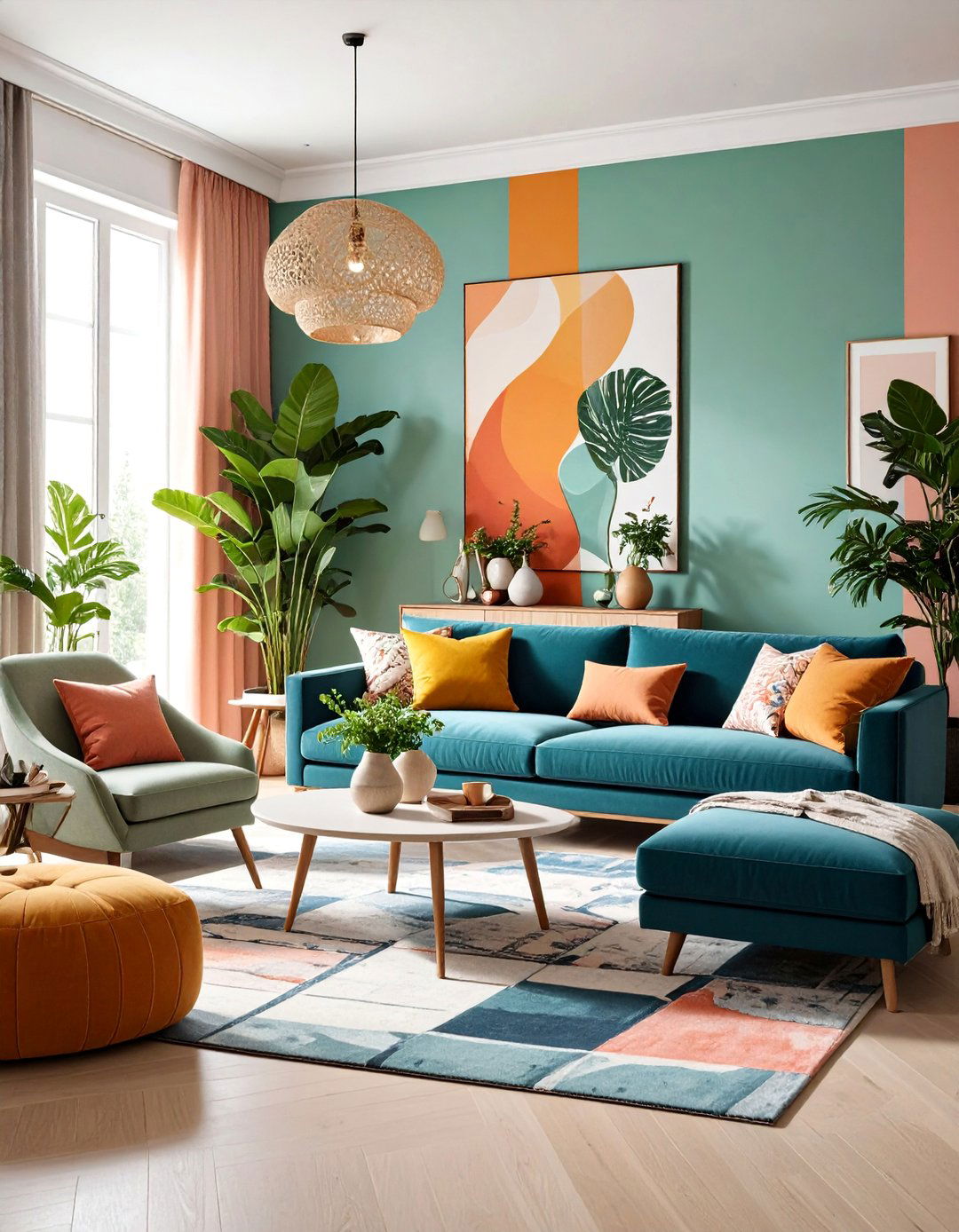
Color-blocking designs using complementary colors create focal points and visual interest in small spaces. Paint one wall in a bold color like deep blue or forest green while keeping other walls neutral. Use statement lighting fixtures and eye-catching artwork to create focal points that draw attention away from limited space. Choose furniture in neutral tones that complement rather than compete with the accent wall. Add accessories and textiles that pick up colors from the accent wall to create visual connection throughout the room. Include metallic accents to add sophistication and light reflection. Position the accent wall to highlight architectural features or create a backdrop for key furniture pieces. Use lighting to emphasize the color contrast and create depth. Add plants or artwork that complements the bold color choice. This approach creates visual drama and personality while making small spaces feel more dynamic and interesting.
23. Streamlined Storage Living Room with Hidden Organization
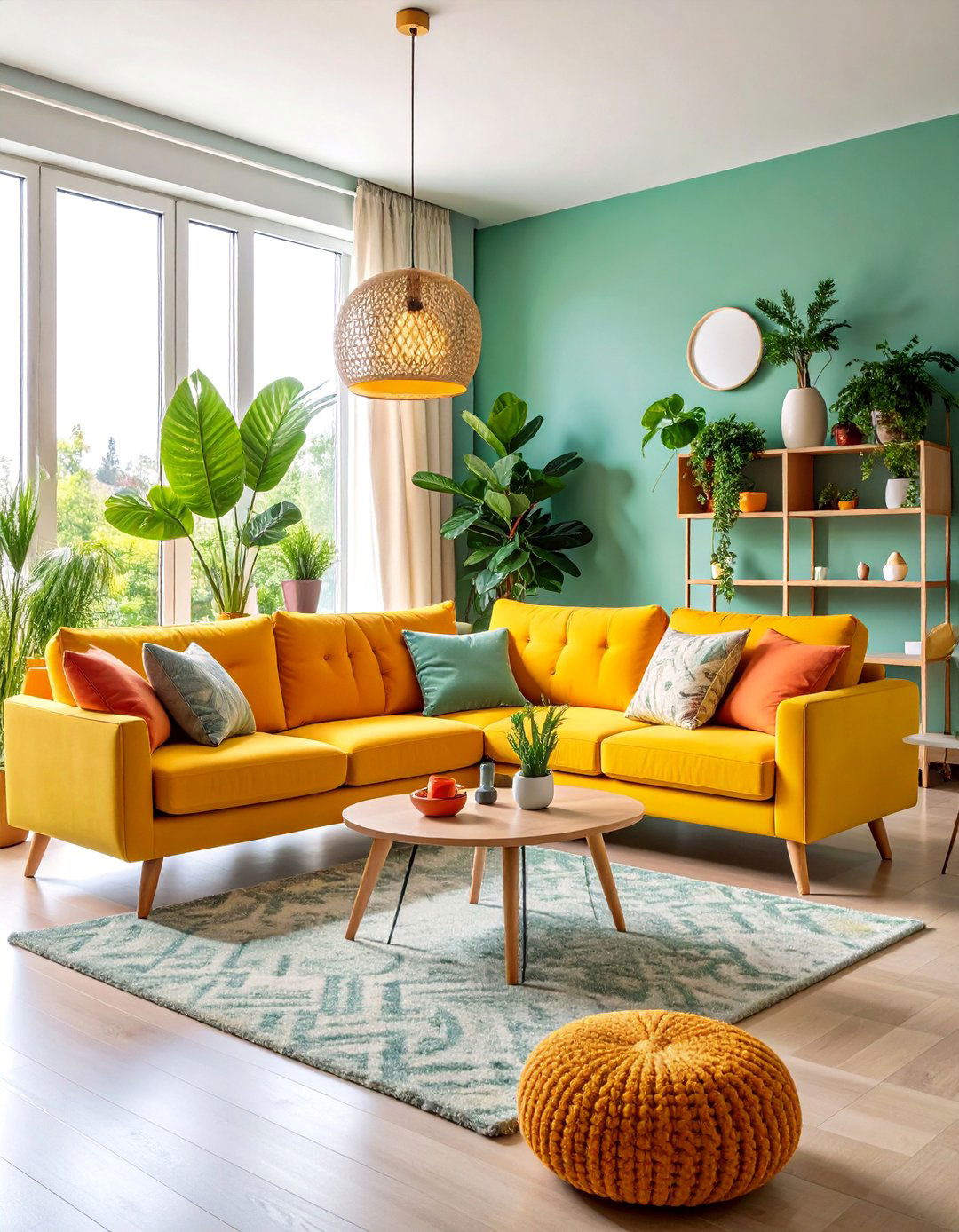
Clever storage solutions that keep clutter hidden while maintaining easy access are essential for small living room functionality. Choose furniture with concealed storage compartments throughout the room, including storage ottomans, lift-top coffee tables, and sofas with hidden compartments. Install cabinets with doors to hide everyday clutter while maintaining clean sight lines. Use decorative baskets and attractive containers to organize visible storage areas. Include under-stair storage if available, or create storage in unexpected places like behind doors or under seating. Choose furniture that serves multiple storage functions to maximize organization without adding bulk. Install hooks and hanging storage behind doors and in closets. Use drawer organizers and internal storage systems to maximize efficiency. Add labels to maintain organization systems over time. This approach maintains clean, uncluttered appearance while providing comprehensive storage solutions for small space living.
24. Symmetrical Layout Living Room with Balanced Design Elements
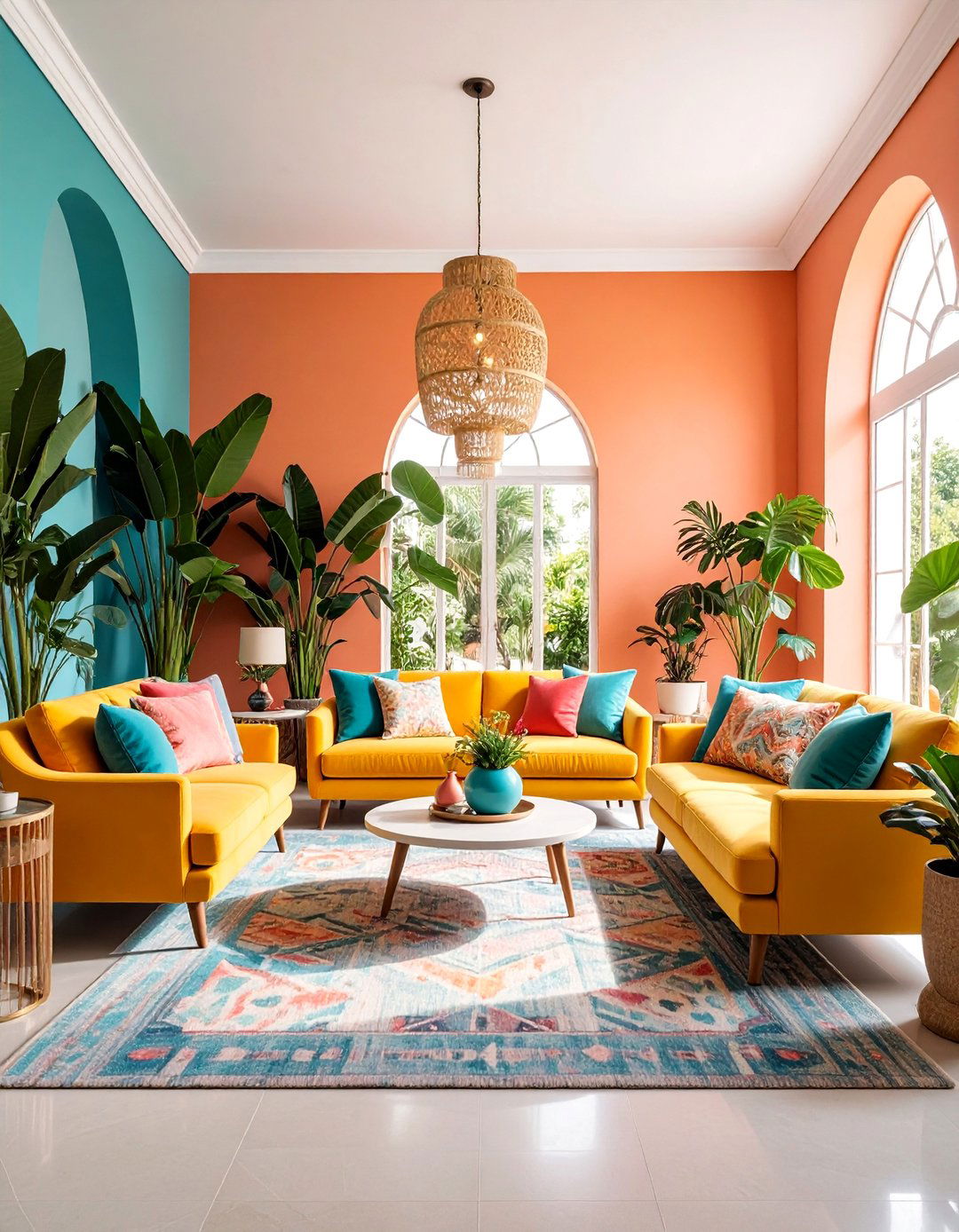
Symmetrical arrangements create visual balance and order that makes small spaces feel more organized and spacious. Position identical table lamps, side tables, or chairs on either side of a central focal point like a sofa or fireplace. Design layouts that work with existing architectural features to create harmony between the room's structure and furnishings. Use matching artwork or mirrors in symmetrical arrangements to create visual rhythm. Include identical plant arrangements or decorative objects to reinforce the balanced feeling. Choose furniture with similar proportions and heights to maintain visual equilibrium. Position rugs and lighting symmetrically to enhance the organized appearance. Use color distribution evenly throughout the space to avoid visual weight on one side. Add architectural details like molding or shelving symmetrically if possible. This approach creates calm, orderly environments that feel larger due to the visual predictability and balance.
25. Luxe Small Living Room with Affordable Elegance

Affordable luxury trends focus on finding high-impact decorative pieces and quality vintage finds that add richness without expensive price tags. Include one statement piece like a vintage chandelier, elegant mirror, or luxurious fabric piece to establish the upscale tone. Focus on handcrafted and artisanal pieces that add unique character while supporting sustainable practices. Choose rich fabrics like velvet or silk in small doses through cushions and throws rather than major furniture pieces. Add metallic accents in gold or brass through lighting fixtures, picture frames, and decorative objects. Include one piece of artwork or a dramatic mirror to create a focal point. Use layered lighting to create atmospheric elegance. Choose furniture with interesting details like nailhead trim or curved lines. Add fresh flowers or high-quality artificial arrangements for sophistication. This approach creates elegant, upscale environments on modest budgets by focusing on strategic splurges and careful curation.
Conclusion:
Small living rooms offer unique opportunities for creative design solutions that maximize both function and style. The key is viewing space constraints as welcome design challenges rather than limitations. Through strategic use of multifunctional furniture, vertical storage, light colors, and optical illusions, compact spaces can feel remarkably spacious and sophisticated. Success lies in balancing bold design elements with practical storage solutions while maintaining visual cohesion. Whether embracing minimalist principles or bold maximalist schemes, small living rooms can accommodate diverse lifestyles and preferences while delivering comfort and functionality that rivals much larger spaces.







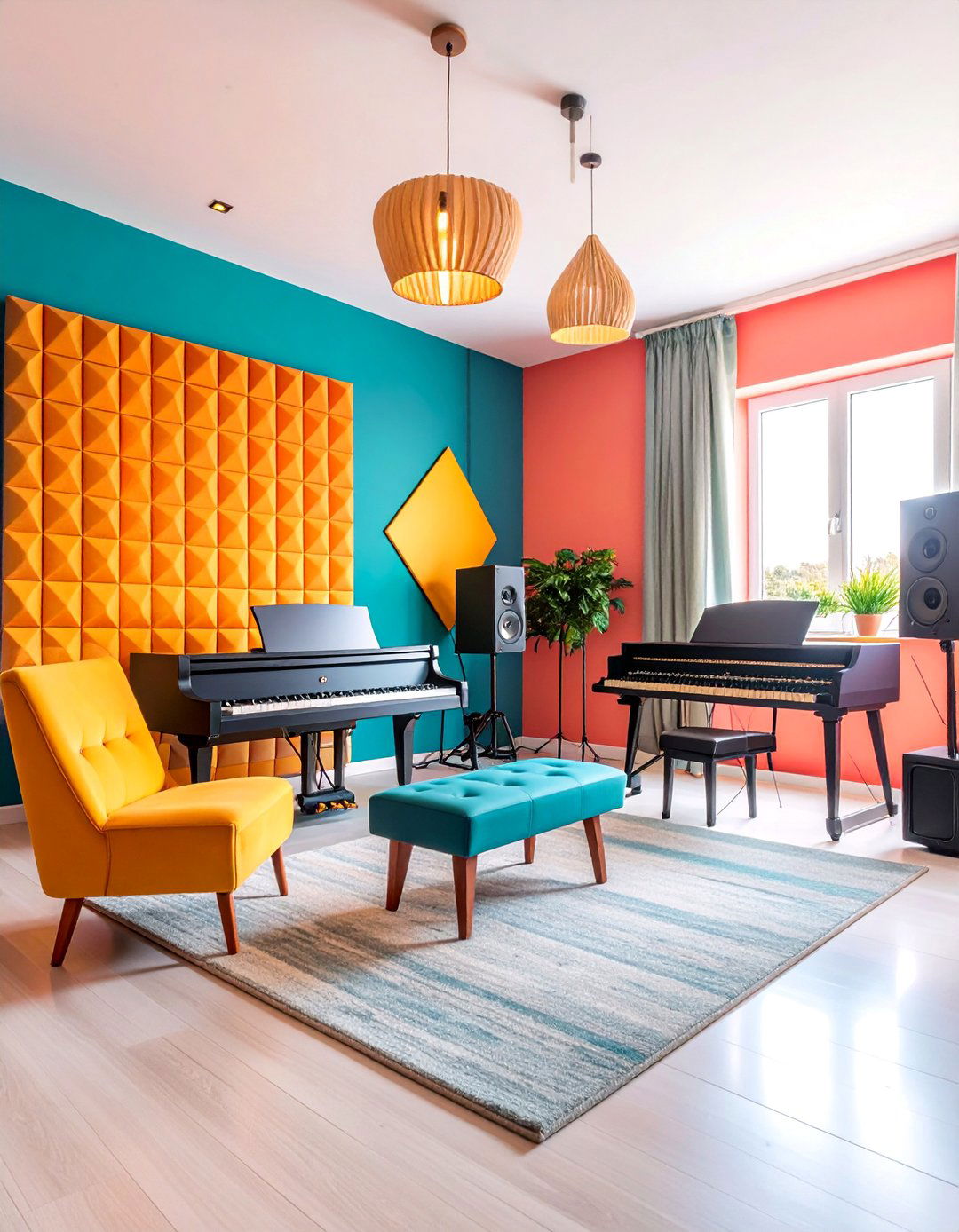

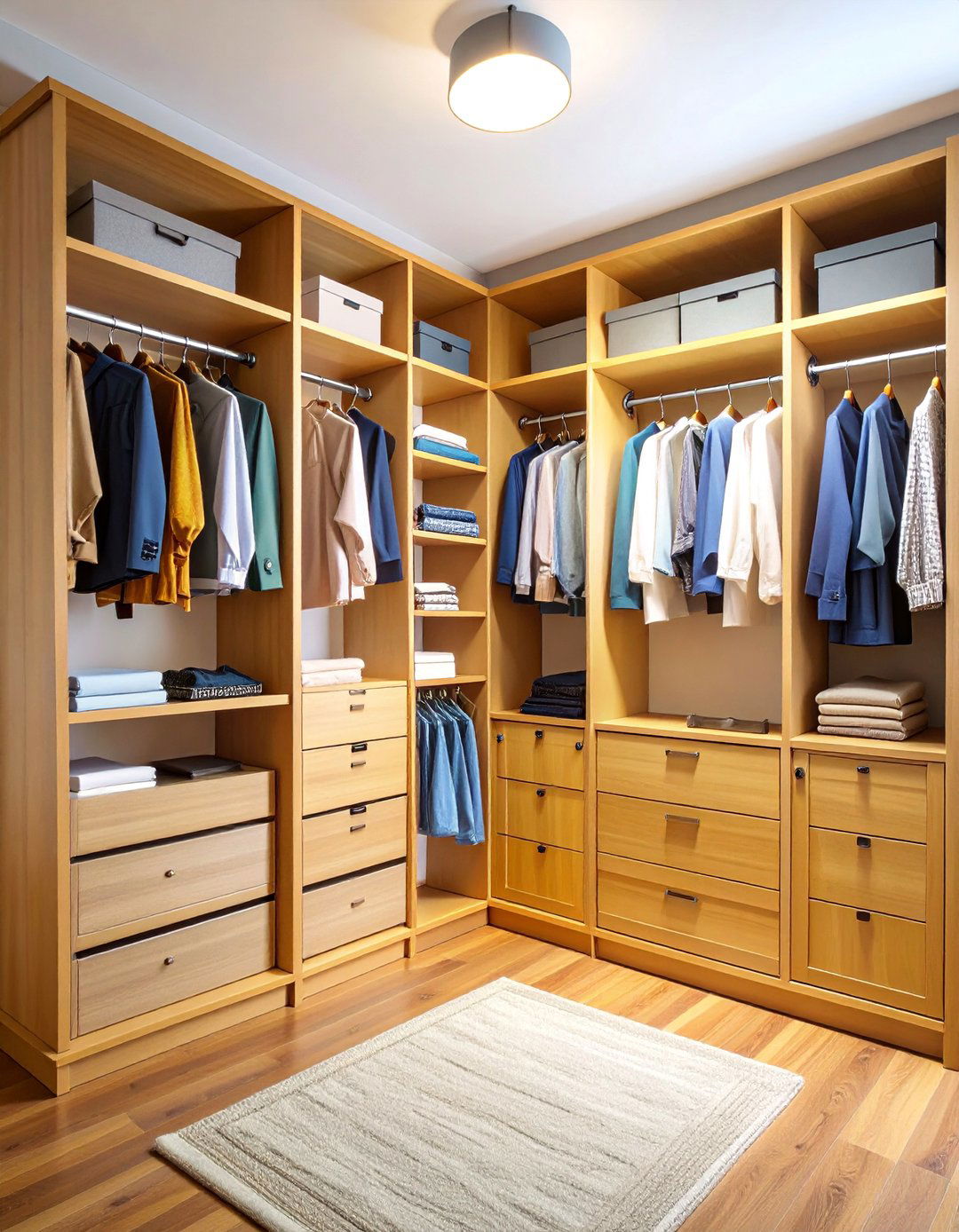



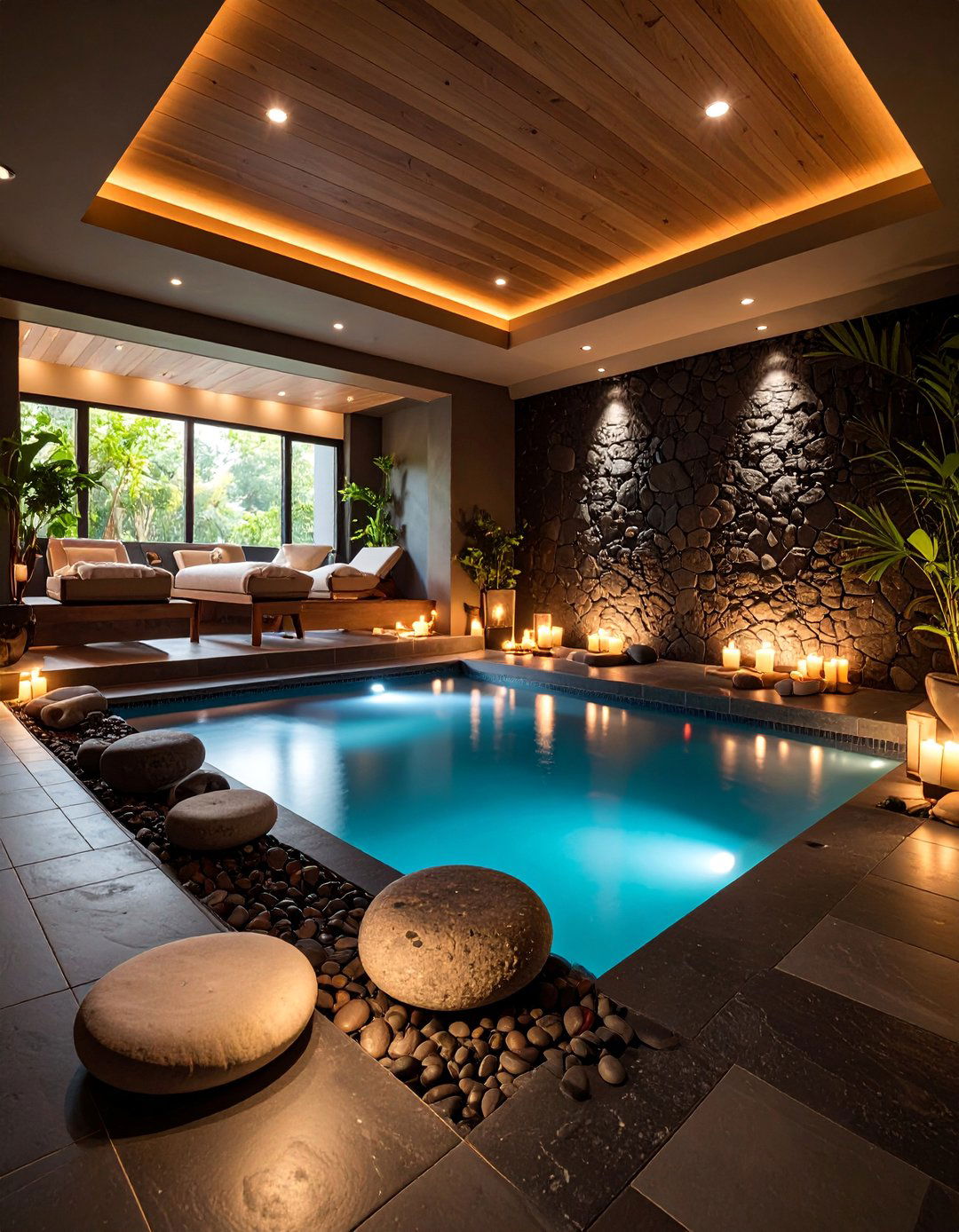
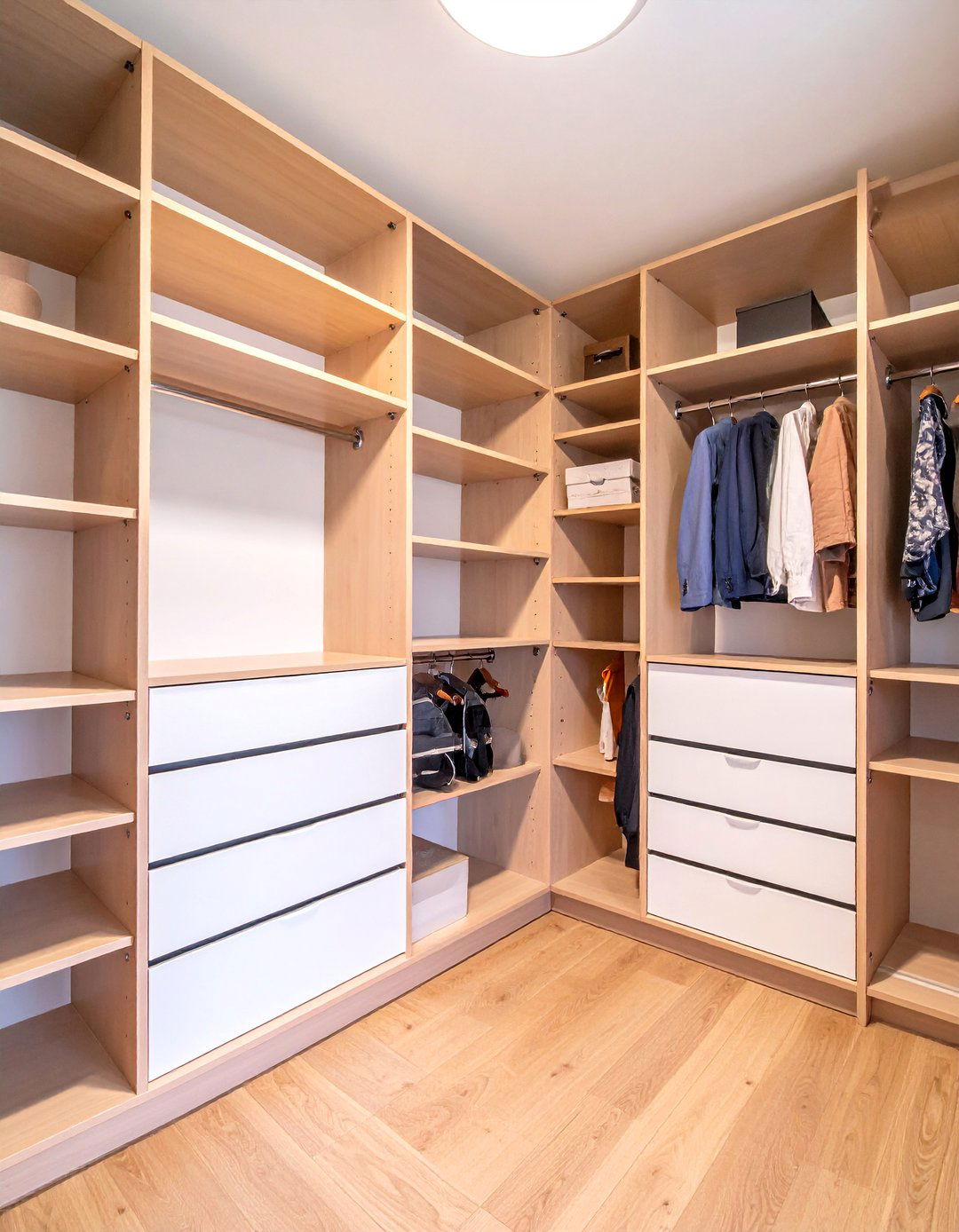
Leave a Reply